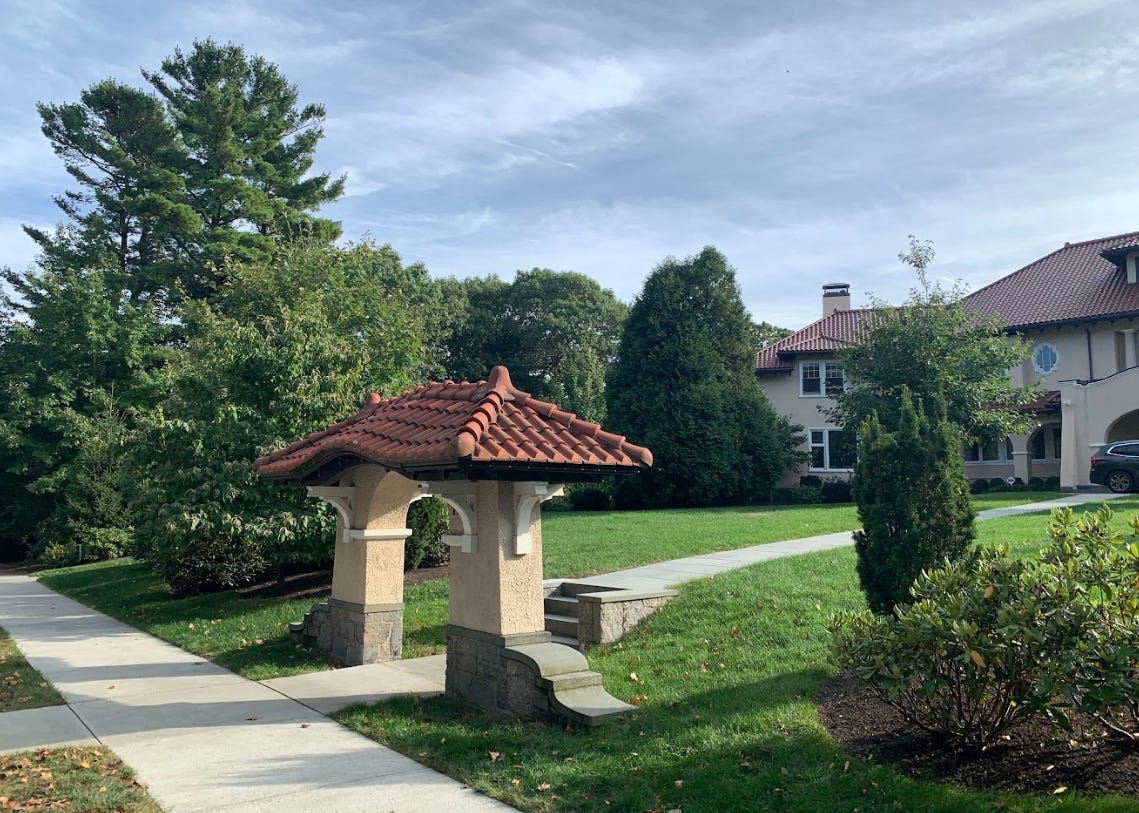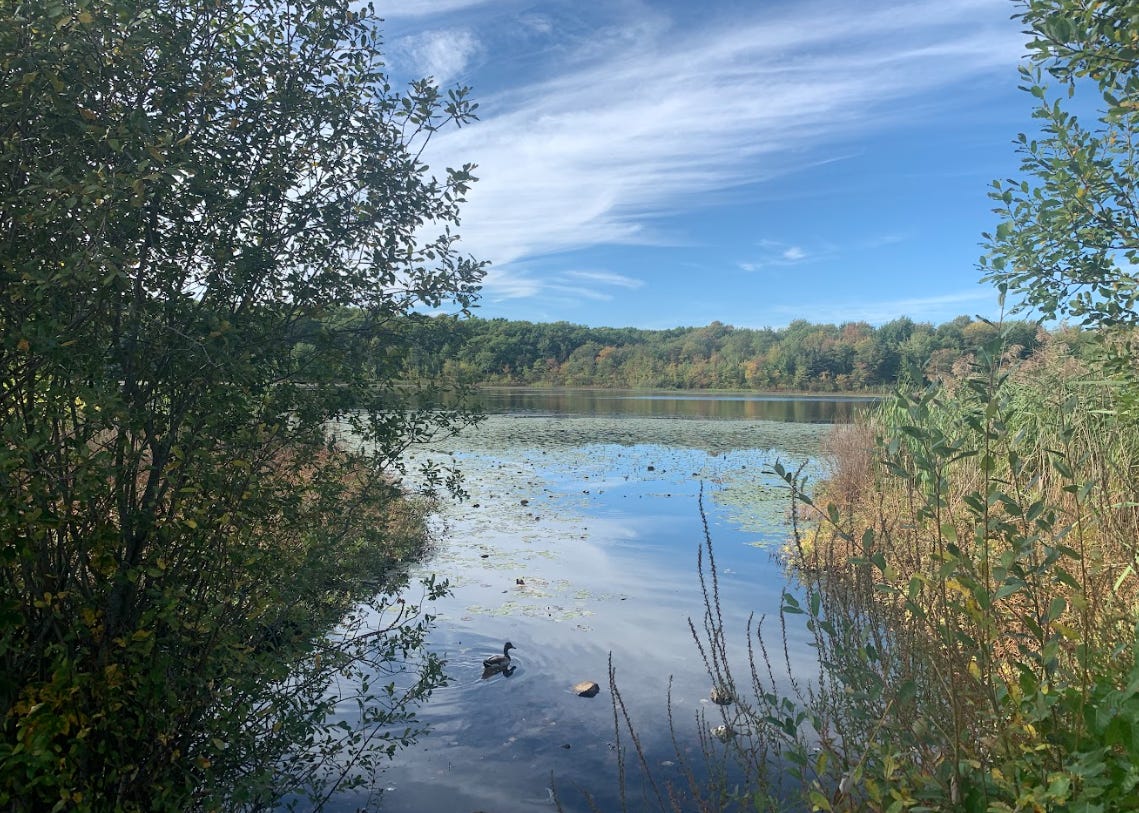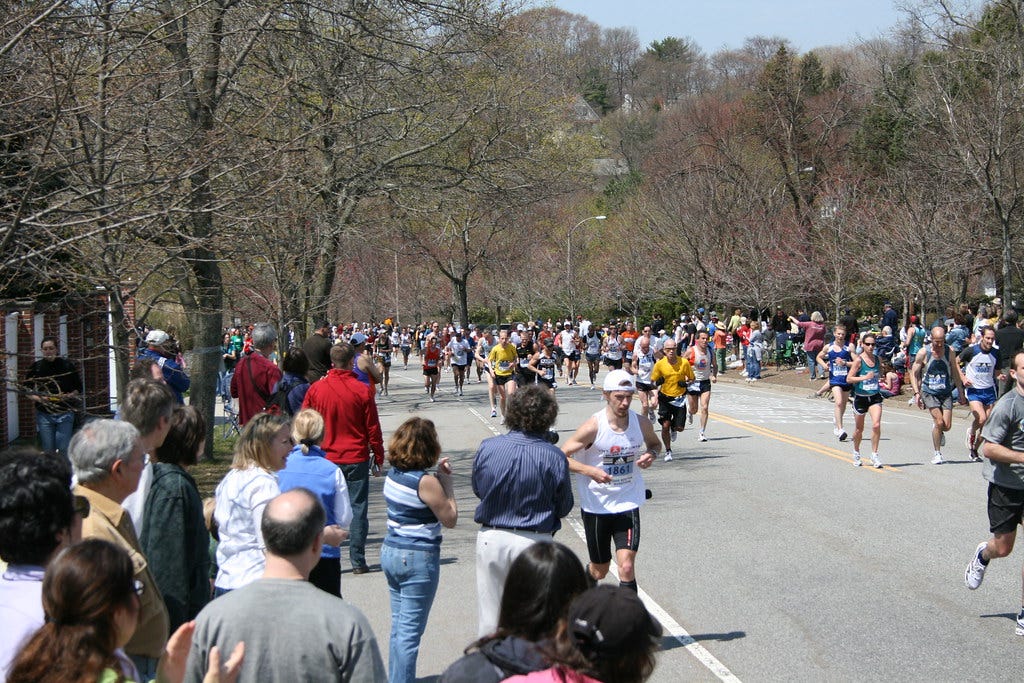Once in awhile, you read a book or see a movie with a central idea that’s so delicious that you don’t really care how smartly or poorly that idea is executed. For me, one of the classics of this sub-genre is John Carpenter’s Escape From New York. The year is 1997 and crime in America has risen by 400%. To contain it, the government has built walls around New York, placed land mines on the bridges, and turned the city into the world’s largest maximum security prison. This is all going just fine until Air Force One crash-lands in Manhattan. The gangs that run the island capture the president. To get him back, the feds tap Snake Plissken—a soldier turned federal reserve robber played by Kurt Russell—to infilitrate New York and break the president back out. If he pulls this off within 24 hours, then Snake gets a full pardon for his crimes. But if he fails, a small tracking device which has been implanted in his neck explodes. I know writers who would trade a decade of their lives for coming up with such an incredible setup.
In its vision of a dystopian police state, Escape From New York—made and released in 1981—was a metaphor for the disinvestment that ravaged American cities in the wake of suburbanization. Carpenter imagined a nightmare future in which poverty and crime are sequestered in one guarded hellhole, with the entire urban population treated like criminals. But what we often see in our current age of inequality, with the perception of rising crime (even when it’s actually declining) is the opposite of the Escape From New York scenario. Today the powerful are walling themselves off: often within cities!

In 2017, Evan Osnos wrote a wild story for The New Yorker on Silicon Valley tycoons gearing up for the apocalypse. Their preparations included converting former missile silos into luxury bunkers, hiring merceneries to guard their mahogany catacombs, and my personal favorite, taking more archery lessons. But there’s a much subtler form of self imposed seclusion that you can find in most parts of America; the creation of wealthy villages in large metro areas. Sometimes these fiefdoms are municipalities, but just as often, they are unincorporated areas made from pieces of neighboring cities and towns, which have been Frankenstein-ed together. A gated community like this might contain an actual gatehouse and a wall. But the prices of real estate and local goods are usually so exorbitant that no wall is needed to keep out the riff-raff.
Or at least, that’s what a lot of the gilded villagers think.
In Boston, where I live, there’s a place on the west edge of town that’s called “Chestnut Hill,” and a lot of people don’t seem to realize what it actually is. “Chestnut Hill” often brings to mind the Chestnut Hill Mall—a collection of shops on both sides of Route 9. Others may assume that there’s a hill in this region of Boston, speckled with chestnut trees and worthy of name recognition. But in fact, Chestnut Hill is an unincorporated area with one of the highest concentrations of wealth in Massachusetts. It’s a hodge podge of land owned by Boston, Brookline, and Newton. Residents include New England Pariots owner Bob Kraft and super-investor Seth Klarman. And according to Redfin, homes in Chestnut Hill sold for a median price of $2.1 million in November last year. And yet, there is a structural vulnerability to Chestnut Hill’s castle walls; a breach which you’ll see in other moneyed villages. You can still walk around them.
I don’t mean “walk around” as in “walk from some hedge fund manager’s house to the local apothecary skincare store.” I mean a perambulation, in which you identify the village border on a map and you walk it, tracing a full circle around the kingdom. In this newsletter, I’ve written about the surprising beauty and vivid strangeness of doing a perambulation of a city over several days. (In Philly, there’s an artist and community organizer named J.J. Tiziou who created a bi-annual perambulation event called the Walk Around Philadelphia.) But perambulating a wealthy village is a different animal. It’s more manageable than a citywide circuit, given the small acreage of villages, but it also poses its own hazards. When you’re walking through an old industrial yard on the edge of town, you might worry about finding yourself in the kind of trouble that may require calling the cops. But when you’re ambling around a village like Chestnut Hill, you have to consider the possibility that somebody there might call the cops on you.
So, given this reality, why should you put on your trainers and perambulate the rich?
- Walking around a wealthy village can demystify the place and change the way you and others perceive it. Once you see the arbitrary nature of where the borders have been drawn, the village can start to look less powerful and more absurd.
- Going for a walk that feels sort of like trespassing can be really fun; especially when you take the walk with a few friends who are also game for flying close to the sun. Strength in numbers is a real thing when it comes to walking in gilded territory.
- It’s important to take advantage of public sidewalks and paths wherever they exist. Because if these essential resources are being used regularly, by a diverse range of people, trying to taking them away becomes more cumbersome and conspicuous.
With all of this in mind, I decided to kick off 2025 by perambulating Chestnut Hill; a walk of roughly 6.5 miles that took me through a surreal spectrum of residential and rustic environments—not to mention, commercial nooks and a special historic place.
I rode the MBTA’s Green Line trolley to the north edge of the village and set off on my circuitous walk near two of the most well-known destinations within the Chestnut Hill radius: the campus of Boston College and the rippling Chestnut Hill Reservoir. Every day, hundreds of perambulators walk or jog around the reservoir, and I’d imagine that only a small handful are aware that it only exists because landowners were persuaded to sell pieces of their marshland and meadows to the City of Boston in the late 19th Century. Boston, which was growing at the time, needed to expand its water storage capacity, and without the cooperation of Amos Adams Lawrence—a textiles kingpin who delivered the lion’s share of land for the reservoir—it’s unlikely that the project would have been possible. As I walked along the western shore, breaking slightly away from the Chestnut Hill line for a glimpse of Downtown Boston across the water, I wondered how much it would cost the City of Boston to buy land from Chestnut Hill landowners today.
As I left the reservoir behind and crossed into more palatial residential territory, that hypothetical figure seemed to grow bigger and bigger. Not only were the mansions I wandered past surrounded by hedges and walls, but the some of the roads back here were weirdly chewed up. At one corner, I saw a pothole deep enough to take out a tire on an Escalade. And then it occurred to me that some of these raggedy roads were private ways, which are owned and maintained by adjacent property owners instead of the city. You would think that in a gilded village, everyone would chip in to ensure that their roads were of the highest quality, but collectivism and wealth are pretty awkward bedfellows. In Sun Valley, Idaho—a winter sports playground for the 1%—the lack of affordable housing in the town has forced fire fighters and other first responders to move farther and farther out of the area. And yet, this does not seem to have inspired thoughts such as, “Maybe we should allow one of those apartment complexes to go up, in case my boiler explodes.” I guess when money is no object, it’s easy to presume that no matter what happens, you’ll be okay. Hell, maybe it’s the accurate calculus.
For most of my manse wanderings, I was the only walker on the streets of Chestnut Hill. But that changed suddenly and jarringly when I reached the bustle of Route 9 via Hammond Street and swung a right into the parking lot of the Chestnut Hill Mall. The businesses that loomed ahead of me ranged from pedestrian-level offerings like Star Market and Shake Shack to more imperial brands such as Arc’teryx, Blue Bottle Coffee, and the Showcase “SuperLux” movie theater—where I could have plopped into a reclining leather chair and watched the Nosferatu remake with heated lumbar support. But I had already seen and enjoyed the movie a few days earlier, so I pressed onward to the Hammond Pond Reservation woodlands. You’d never know it from zooming past the mall on Route 9, but the Chestnut Hill Mall backs right up to the heavenly waters of Hammond Pond—which earns the “Great Pond” title that Massachusetts bestows upon any water body that’s over 10 acres in size. The forest on the west shore of the pond contains rickety bog bridges, climbing rocks, and a regular current of human visitors. The reservation trails begin from the edge of the mall parking lot, mere steps from the SuperLux cinema. And I found this heartening.
The thing about malls in uber-wealthy areas is that they still force people who might otherwise be sequestered away in opulence to spend time with each other. Even if it’s just harrumphing as the person ahead of you in the line at Winston Flowers takes forever, there’s still value to logging face time in society. I’m no stranger to swapping small talk with a cashier or server who seems chatty, but back in 2019, when I spent almost a month living in my bedroom after contracting mono from another person who had managed to dodge it during college, I had to learn how to talk with people in public again. My first attempts were a mess. My timing, sentence structuring, and sense of humor had atrophied, and it took me another month to recover in this way. I don’t know if most denizens of the Chestnut Hill Mall are out-of-town visitors or real Chestnut Hill residents, but having a mall and a mall-adjacent woodland in the village seems like a benefit for everyone. If nothing else, it creates and maintains precedent for people moving around on foot, crossing paths, and ideally, talking to each other.
The trails of the Hammond Pond Reservation took me uphill from the mall, across the Hammond Pond Parkway (easily the most hair-raising part of my perambulation) and eventually, into another spruced-up residential zone. But what I didn’t realize was that all of this uphill walking would deliver me to a hallowed place within the confines of Chestnut Hill—a shrine for the ultimate precedent of human movement in Boston. As I arrived at Commonwealth Avenue, I stepped right onto the Boston Marathon course and made my way up Heartbreak Hill; one of the most grueling high points along the race, infamous for breaking spirits and snapping tendons. The first Boston Marathon went down in 1897. And it was right around this time when Chestnut Hill transformed from farmland into a posh residential enclave, under the direction of Frederick Law Olmsted; the rock star landscape architect who designed Central Park. (He took on private commissions as well as municipal gigs.) What this means is that for roughly as long as Chestnut Hill has existed—an island of gilded exclusitivity within a city—there have been hordes of unwashed people running through the village each year.
Suddenly, my perambulation of Chestnut Hill felt like less like a hoot and more like the invocation of a tradition. I might have been one sweaty, fragrant person, but I was still availing myself of the right to move around this shiny space. I have no interest in running a marathon (more power and deep respect to those who do!) but I could see taking up perambulation as a distance sport in the most silver-spooned locales of the U.S. And winter might be the best time to undertake such walks, with many residents of these locales away in the tropics or the mountains. As I closed the loop, I arrived at the Newton Commonwealth Golf Course. The golf carts were hibernating. The sky was free of projectiles. And the grounds were an empty, inviting expanse of matted grass and goose shit. I squelched forward, and I felt an unexpected warmth of belonging.
If you’d like to follow my footsteps and try perambulating Chestnut Hill, you’ll find an AllTrails map of my walk by clicking here. But if you’re attempting to perambulate a different village, here are my three tips for planning a perambulation walking route.
1. First, find the borders of your village by searching for it on Google Maps.
2. Next, fire up another online mapping tool. Using the Google Map as your reference point, identify the streets and paths that you’ll walk, to more or less trace the border of the village you’re perambulating. I highly recommend using a mapping tool that shows you the most walkable spaces within a map. Google Maps is fine for streets, but for paths in parks and natural spaces, AllTrails and OpenStreetMap are superior.
3. Since you won’t be able to literally walk the village line in most places, err on the side of choosing interesting scenery for your walk, even if it takes you slightly away from the border for a little while. Any perambulation walk is a rough approximation.
With that, here’s John Carpenter playing the theme for Escape From New York (which he also wrote) to close us out. Have fun out there, and happy new year to each of you!








In northern New England, there's a tradition of volunteers walking the boundaries of a town, I suppose to ensure there's no line confusion. Your subscribers might consider contacting select boards and joining an official perambulation.
I love the perambulate idea. But once people have parambulated Chestnut Hill, I suggest getting into the interior. Venturing out from nether Allston Brighton at the beginning of the pandemic in March, 2020, and heading south uphillI I passed through BC's empty campus and discovered Houghton Gardens (literally fenced but with metal gates that open), then tentatively continued across the Green Line tracks to find the backside of Hammond Pond Reservation, and it's magnificent rocks and valleys, and adjacent Webster Woods. Mary Baker Eddy's house is tucked in there as well. If you cross route 9 heading south on Hammond Pond Parkway, you can add on Lost Pond Reservation (which disaffected Brookline teens seem to know well), venture past an incinerator facility (Brookline does have waste!) and then finish off climbing up the very strange Skyline Park (formerly a dump?). This became our regular pandemic route. Fortunately wealthy folks who were away often were having construction done on their homes, so plenty of porta potties. Fewer porta potties today but still a great way to get in some greenbathing and a whiff of wealth if you're on the western edge of Boston.